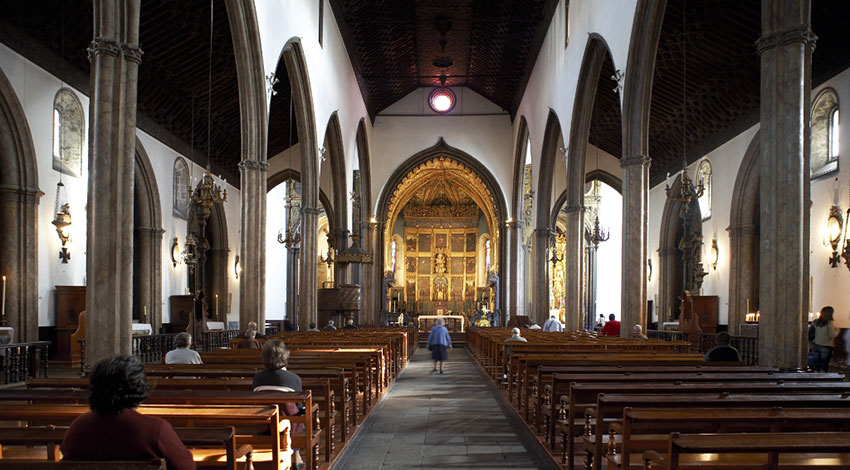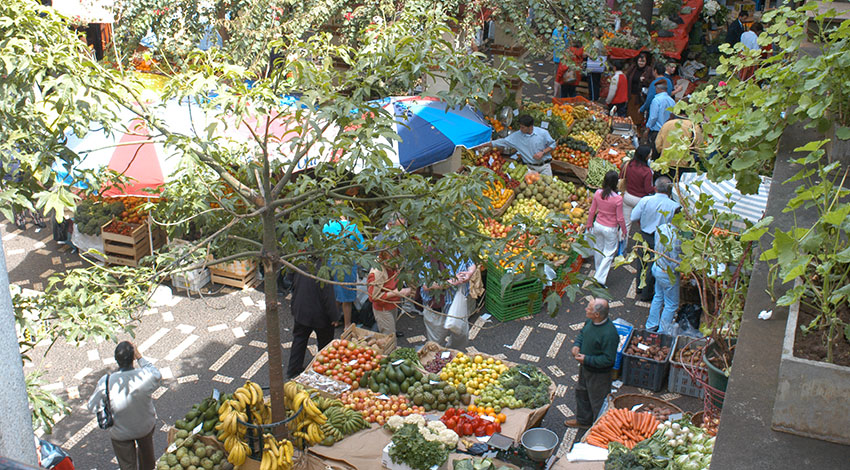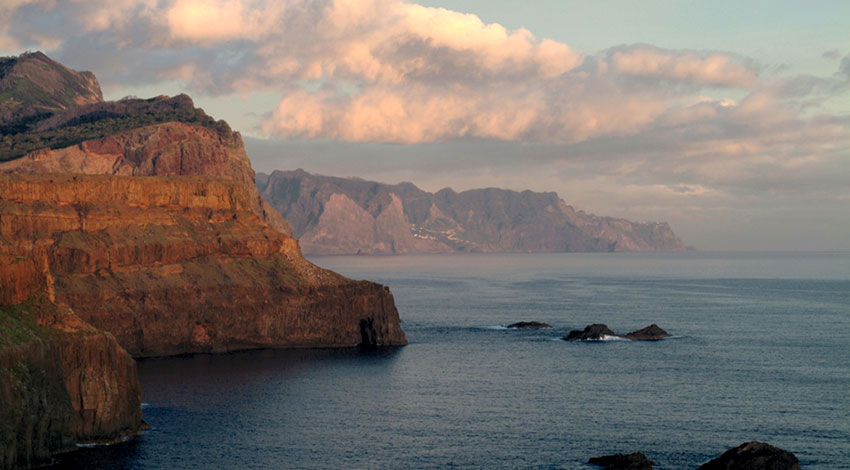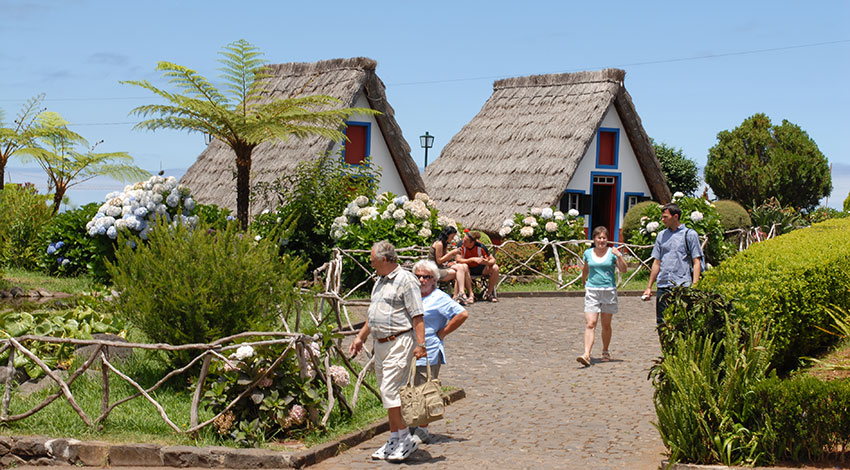Places that you must visit in the archipelago.
Cathedral of Funchal
It was a bull from Pope Leo X in August 12, 1514, that created Funchal’s Diocese and elevated the new church to a Cathedral. Mixing the hispano-arab style, the roman-gothic style and the Manueline style, it was, for many years, one of the main poles of the city life administration. Its gothic styled door, the Manueline features and the ceiling made with woods from the island are just a few of the many reasons why you should visit the most iconic religious temple in Madeira. It’s open every day from 9am to 11am and from 4pm to 5:45pm.
Farmers' Market
Farmers' Market was built in 1940 and it's one of Madeira's most iconic constructions, marking the style of the region's New Estate period. Thousands of visitors stop by this beautiful and colorful market every day. Ranging from tourists and locals, some enter out of curiosity and some out of necessity. The florists are always dressed accordingly, wearing Madeira's traditional garments. The market's fruit sellers and the fish market contain a wide arrange of regional products to be sold, making this another alluring attraction of this place. It's open all week long, only closing on sundays.
Jesuits’ College of Funchal
Jesuits’ College of Funchal was the first of its kind to be founded outside Europe’s Continental area in 1569. This building is the result of a fusion between Mannerist and Baroque architectures. It’s possible to see in here some of the assets belonging to the last Austro-Hungarian emperor, Charles I of Austria, from around 1920, time when he was exiled in Madeira Island. Tour Guides provided by the Region’s students are available. This building was the English troops’ headquarters in the beginning of the 18th Century, as well as a secondary school aside from being the Jesuits’ College. Nowadays, this is where the Madeira University's rectory is located.
Ponta de São Lourenço
One of the island’s most visited places is located in Caniçal: Ponta de São Lourenço. This is considered to be one of our island’s natural monuments, not only for its rocky landscape, where the sea fights relentlessly up the vulcanic peninsula, but also for its six kilometer trail that allows the adventurers to reach “the end of the Island”.
Cristo Rei Viewpoint
Madeira’s Cristo Rei Viewpoint is located in Garajau, in the parish of Santa Cruz. Apart from a privileged view on Funchal’s bay, there is a statue there that names the place and happens to be built in 1927, 4 years before Rio de Janeiro’s Cristo Redentor. Garajau’s beach is also a good reason to visit this area, right below the statue, at the base of the cliff. A cable car allows visitors to get to this beach, a ride with a breath-taking view. The beach is integrated in the Garajau’s Partial Reserve and is considered to have optimal conditions for divers.
Cabo Girão
Cabo Girão is a 589 metres high sea cliff, located in Câmara de Lobos. This is one of the World’s highest cliffs and has one of the Region’s best views. The whole of Câmara de Lobos as well as the City of Funchal can be seen from this viewpoint. This is a place that makes you feel both omnipotent for being so high above the sea level and small at the same time, for seeing the vast Atlantic Ocean reminding you that you’re in a little island. Cabo Girão’s Fajã is located below, accessible by boat or cable car.
Santana
Santana is a Parish located on the island’s North Coast and one can find one of Madeira’s most emblematic symbols there: The traditional Santana Houses. These small triangular houses, with their roofs made of thatch, are one of the Region’s trademarks. But there’s more to Santana than just its typical houses, like its beautiful levada walks, for instance. The best known Santana trail is the Achada do Teixeira that ends in the Island’s highest point, Pico Ruivo (1861 metres above sea level).












